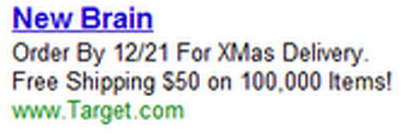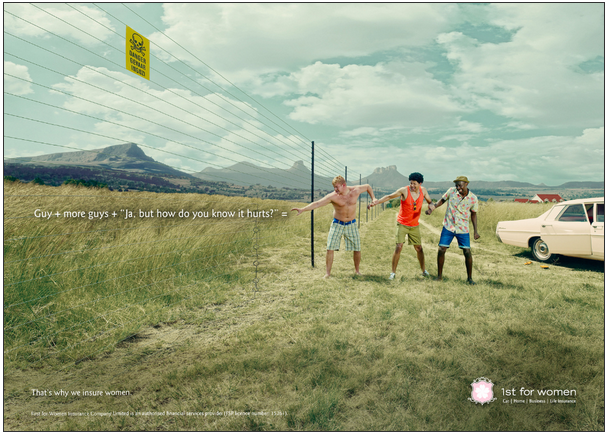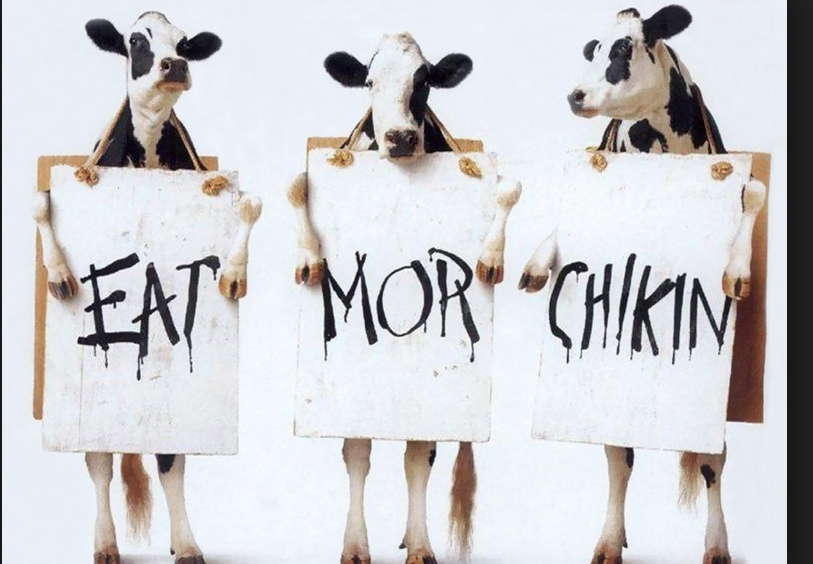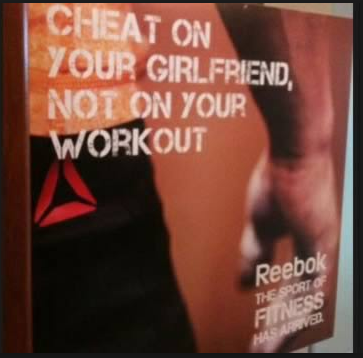
For better or worse, humorous advertising sticks in your audience's minds like nothing else. Learn from the success and mistakes of others as we explore humor in PPC advertising.
The timeless adage “laughter is the best medicine” definitely holds some truth. It’s positive, does great things for your body and simply makes you feel good. Now while we’d all love to write something that will make people laugh until their eyes tear up and draw up an image worth 1000 laughs, with Pay Per Click advertising this is an unlikely feat. Text ads limit you to 70 characters and display ads have minimal size and space on the sides, tops and bottoms of webpages. So with so much to get across to customers where does humor fit into the mix? Let’s break it down and let the fun begin.
TEXT ADS
When to use humor:
It’s best used with puns and witty comments/questions but still getting your message across! Text ads differ from video and display ads because text ads are triggered directly from a user’s search, so with this knowledge you can be ready with a catchy ad that just might sway a user to pick you over the competition.
Here’s a funny one for some chocolate:

With chocolate a customer usually knows what they are going to get so if you can make them laugh and spark interest in your product line as shown in the ad above, that’s the best you can hope for. It’s hard to read that ad and not smile.
Here’s another creative one for automobiles

It’s definitely unique and stands out from the competition. If I’m searching for cars and I see an ad like that among the masses I’d laugh and definitely be more inclined to click on it.
During seasons & holidays. Around Christmas time the advertising space is sure to be crowded so this is a good time to make yourself stand out with some funny language. If you sell spices go for phrases like “naughty and spice gifts this holiday” or if you sell hammocks particularly well during the fall season something like “Fall is here, fall into one of our comfortable hammocks.” Be creative and don’t be afraid to be different!
When to not use humor:
Avoid using humor when the ad will better service a customer with a description. If you’re product or service isn’t obvious like chocolate, cars or hammocks, you need those two lines to tell the customer about yourself and what you’re offering. For example: if you sell specific types of weather stations or specific types of jewelry, you’re probably better off using model numbers and jewelry descriptions than appealing to humor.
If you offer products and services relating to death, funerals, depression, anxiety, disease and so on and so forth it would be wise to avoid humor in those and similarly related areas as well. It’s best to use common sense and put yourself in a customer’s shoes when thinking about using humor. While some people can take certain issues lightly, you don’t want to risk it with your business. Always be considerate.
Don’t force the issue:
Ah, and now we come to the Amazons, Ebays and Targets of the world. What would a humor blog be without mentioning the big boys who have so much money they figured advertising any and everything on Google was the way to go. I don’t blame them but as we look at some examples below, they may have wanted to be a bit more cautious with their keywords and DKI rather than a catch-all type strategy.



These ads are funny but for the wrong reasons. Forcing your ads up for every situation is never ideal.
It’s also not ideal to try to be funny when the opportunity isn’t there. If you’re an airline company using random one line jokes and funny phrases not related to your business or service, you’d be wasting your money. However if you can incorporate humor into what you offer, similar to the “bags fly free” for Southwest airlines, that is a much more appropriate use of humor and wit.
DISPLAY ADS
When to use humor:
Display ads are great for showing your brand all over the web and when you can associate humor into a creative image, that can go a long way to having people talk about you and share that funny image with others. This can be great for already established brands and businesses just starting out looking to make a name for themselves.

This company knows their customers are women and came up with an extremely funny way to show that they only insure women. And we all know about Chick-fil-a’s funny ads.

When to not use humor:
Avoid using humor when you think it will take the focus too far away (or in the wrong direction) from your brand/business. As great as it is to be funny, it’s not for all businesses. That’s why we don’t see health clinics serving up hilarious ads or doctors coming up with funny slogans and images. Certain things just aren’t meant to be funny.
You also don’t want to use humor when it comes at the expense of losing customers. For the women’s insurance shown above, they can show a funny sketch of men because that’s not their customer base but for the Reebok ad below…well…not so much.

Although some men and women will find this funny, some will NOT and you risk losing customers and associating your brand or business with something the public does not view favorably.
Not forcing the issue:
Having trouble brainstorming funny ideas for images and slogans is one thing but if you find yourself working excessively hard to make something funny you may be forcing what is not there. If your business isn’t funny take it down to a product/service level and see if you can be creative there. If you’re products/services aren’t funny maybe something about your business culture can be comical and resonate positively with your customers. If none of this seems feasible, people will see right through your forced attempt at humor.
When the intended humor isn’t funny and doesn’t coincide with what you’re offering. The ad below is a good example, or bad example I should say.

There it is. Humor in a nutshell. The main things to remember are: creativity and wit when possible, don’t force the humor issue, and build a positive image of your company with humor don’t tear down other companies. There’s always going to be success and failures but following common sense is a good rule of thumb to avoid a disastrous situation. And don’t be afraid to be unique! You know your business and your customers. When you have something creative and funny that you believe will reach your customers and shed positive light on your business, that can be the best way to make yourself stand out!











